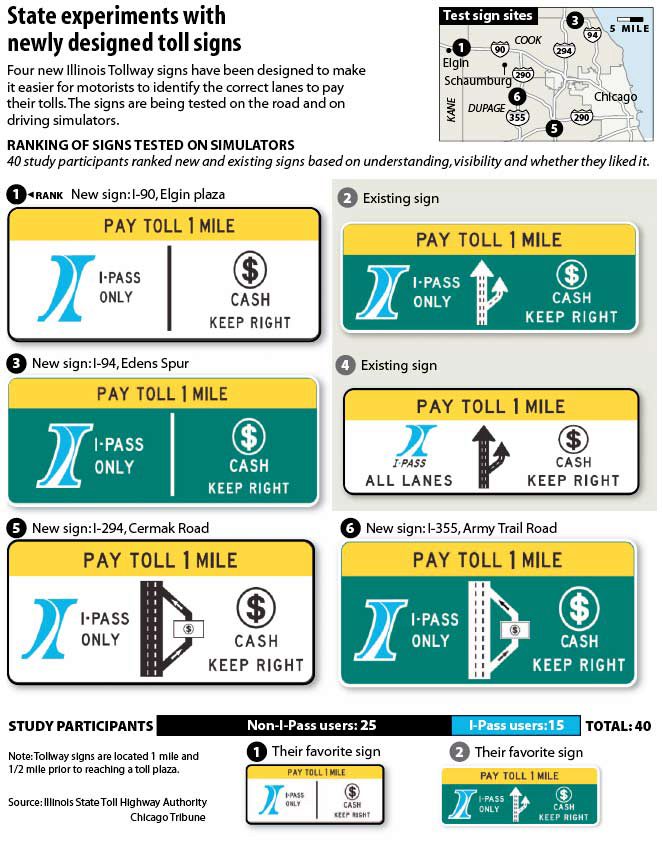EVL in Chicago Tribune: Toll signs take new direction
April 23rd, 2007
Categories: Applications, Devices, Human Factors, Visualization, VR

About
Toll signs take new direction: Experiment aims to boost safety
by Jon Hilkevitch, Chicago Tribune
Getting Around column - www.chicagotribune.com/gettingaround
Published April 23, 2007
In a laboratory where some of the eye-popping special effects for the first “Star Wars” film were created, college professor Jason Leigh sits behind the steering wheel of a Mercedes-Benz simulator that is tooling - and tolling - along the Illinois tollway.
This computer-animated trip on the toll road is not part of some new movie production. Rather, it’s taking place at the University of Illinois at Chicago in an experiment using volunteer drivers of various ages, including truckers, to devise new tollway signs to help direct drivers to pay their tolls.
The goal of the project, commissioned by a contractor working for the Illinois State Toll Highway Authority, is to come up with signs that are easier to understand and to improve safety by giving drivers more time to get into the correct lane to pay their tolls.
Some drivers, for example, are baffled by the intent of an existing tollway symbol, dubbed the “cactus arrow,” which is designed to direct I-PASS users to stay on the mainline highway for electronic toll collection and cash-paying customers to get over into the right lanes to enter the toll plaza, officials say.
“We’ve heard concerns from drivers about confusion over the existing signs,” toll authority spokeswoman Joelle McGinnis said. “Some motorists, mostly occasional tollway drivers or people from out of state, are failing to understand the difference between open-road tolling and the need to divert to the right to pay cash tolls.”
As Leigh drives down the middle lane, his attention is focused on two 30-inch color screens designed to mimic what would be seen outside the car’s windshield. Large overhead signs featuring experimental symbols and text instructing drivers to prepare for the open-road tolling and cash lanes 1 mile ahead come into view as Leigh drives at the pre-set speed of 60 m.p.h., slightly faster than the speed limit but considerably slower than is the custom for many Chicago-area motorists.
“I know that when I drive on [Interstate Highway 294, or the Tri-State Tollway], most people are going about 80 [m.p.h.],” said Leigh, director of the university’s Electronic Visualization Laboratory.